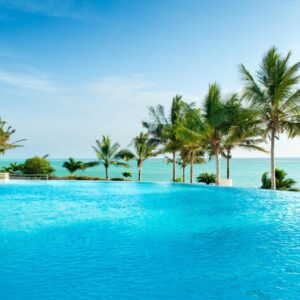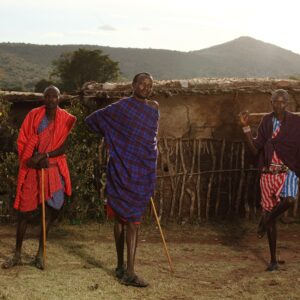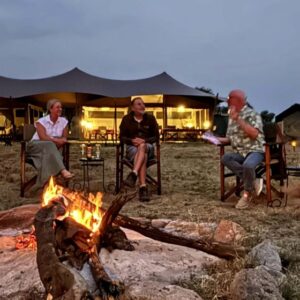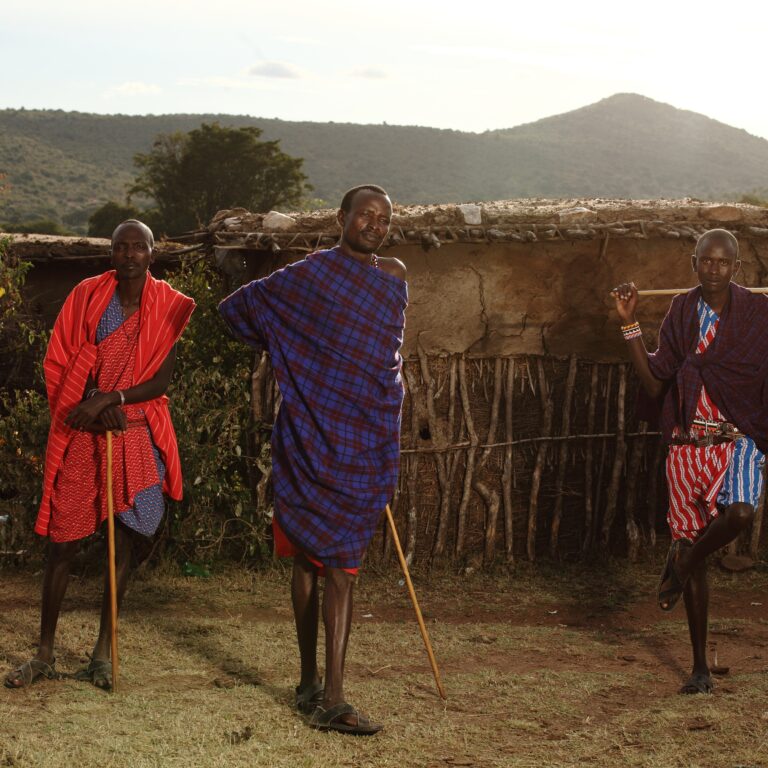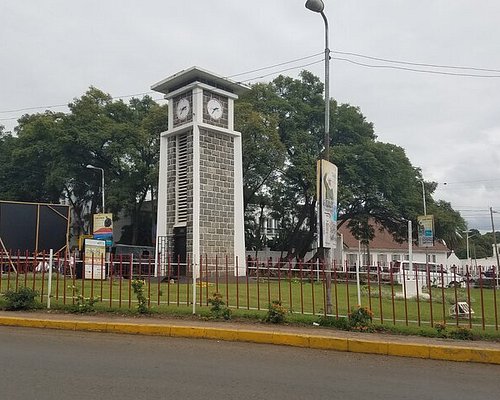Nestled at the base of the Great Rift Valley’s western escarpment, Lake Manyara National Park might be smaller than its famous neighbors, the Serengeti and Ngorongoro. Yet, to underestimate its allure would be a significant oversight. This verdant gem in northern Tanzania offers a concentrated burst of biodiversity. Unique activities and captivating landscapes make it a compelling and often refreshing addition to any Tanzanian safari itinerary. From its legendary tree-climbing lions to its vibrant avian life and diverse ecological zones. Lake Manyara presents a microcosm of African wilderness, packed with compelling reasons to visit.
Lake Manyara National Park offers a unique and diverse wildlife experience. Making it a top destination for safari-goers, with key reasons for visiting including its legendary tree-climbing lions, abundant birdlife, and stunning Great Rift Valley scenery. Varied habitats and engaging activities like canoeing and walking safaris.
1. Tree-Climbing Lions: A Rare and Enigmatic Sight
Perhaps the most famous draw of Lake Manyara National Park is its enigmatic tree-climbing lions. Unlike their savannah counterparts, a significant portion of Manyara’s lion population has developed the unusual habit of lounging in the branches of acacia trees. Often in the heat of the day. While the exact reasons remain a subject of debate among experts. Perhaps to escape biting tsetse flies, they seek cooler breezes. Or gain a vantage point for prey, witnessing these majestic predators draped casually on a tree limb is a truly rare and captivating sight. It’s a behavior not commonly observed elsewhere in Africa. Making Manyara a prime location to tick this unique experience off your safari list.
2. Birdwatcher’s Paradise: A Kaleidoscope of Feathers
For ornithology enthusiasts, Lake Manyara is a bona fide birdwatcher’s paradise. The park boasts an astonishing avian diversity. With over 400 recorded species, a significant number for a park of its size. The alkaline waters of the soda lake itself attract huge flocks of flamingos, often numbering in the millions. Creating a breathtaking pink spectacle against the blue sky. Beyond the flamingos, you can spot pelicans, cormorants, storks, geese, and various raptors. The diverse habitats within the park range from dense forests to open grasslands. Provide sanctuary for a vast array of forest birds, waterbirds, and raptors, making every game drive a treat for the eyes and ears.
3. Scenic Great Rift Valley Setting: Awe-Inspiring Vistas
Lake Manyara’s location is intrinsically linked to its dramatic beauty. It lies at the foot of the magnificent Great Rift Valley escarpment. Which rises abruptly from the park’s western boundary. This geological marvel provides a stunning backdrop to every safari. With sheer cliffs and lush forests cascading down towards the lake. The panoramic views from the top of the escarpment are breathtaking. Offering sweeping vistas across the park and the glittering soda lake, especially at sunrise or sunset. This picturesque setting adds a layer of awe to the wildlife viewing experience.
4. Diverse Wildlife: Beyond the Big Cats
While the tree-climbing lions often steal the spotlight. Lake Manyara is home to a diverse array of wildlife that extends far beyond its feline residents. The park’s varied ecosystems support large herds of elephants. They are commonly seen foraging in the forests and by the lake. Large troops of baboons are a common and entertaining sight. Along with blue monkeys and vervet monkeys. You can also expect to encounter giraffes, zebras, wildebeest, hippos wallowing in the shallows, and various antelopes like impala and buffalo. Leopards are present, though elusive, and lucky visitors might even spot elusive pangolins or bushbabies.
5. Canoeing Safaris: A Unique Perspective
One of Lake Manyara’s standout offerings is the opportunity for canoeing safaris on the lake itself (seasonal, depending on water levels). This provides a unique perspective on the wildlife, away from the dust and roar of the safari vehicles. Gliding silently across the water, you can get up close to hippos, observe vast numbers of waterbirds, and even spot elephants and giraffes drinking at the water’s edge. It’s a peaceful and immersive way to experience the park’s beauty. Offering exceptional photographic opportunities and a different dimension to your safari.
6. Walking Safaris: Engaging with Nature on Foot
For those who crave a more active and intimate connection with the African bush. Lake Manyara offers excellent walking safaris (typically permitted outside the main game drive areas or in designated zones with an armed ranger). Stepping out of the vehicle allows you to engage your senses more fully – the smell of the earth, the sounds of the birds, and the subtle tracks of animals. These guided walks offer a chance to learn about the smaller creatures, plants, and intricate ecosystems that are often missed from a vehicle. Providing a deeper understanding of the environment.
7. Groundwater Forests and Hot Springs: Ecological Wonders
The park’s unique hydrology is evident in its stunning groundwater forests and hot springs. Along the base of the escarpment, underground springs feed lush, emerald-green forests that stand in stark contrast to the dry savannah. These dense areas are vital habitats for primates and offer cooler, shadier retreats for other wildlife. The Maji Moto hot springs, located on the park’s western edge, bubble up from the Earth. A natural geothermal phenomenon that adds another layer of geological interest to the park’s diverse landscape.
8. Cultural Experiences: Connecting with Local Life
Lake Manyara’s proximity to various local communities provides opportunities for rich cultural experiences. The bustling village of Mto wa Mbu, located just outside the park gate. It’s a vibrant melting pot of over 120 different tribes. Here, you can take a guided walking tour to explore local farms, see artisans at work, visit a bustling market, and interact with the friendly residents. This offers a fascinating glimpse into Tanzanian rural life and provides a wonderful complement to the wildlife viewing.
9. Affordable Safaris: Value for Money
Compared to the often higher price tags of the Serengeti and Ngorongoro, Lake Manyara National Park can offer more affordable safari options. Its smaller size means that shorter, focused game drives are effective, and its location often makes it a convenient stopover between Arusha and the larger parks, reducing travel costs. This makes it an excellent choice for budget-conscious travelers. For those looking to extend their safari without breaking the bank, providing fantastic value for its diverse offerings.
10. Accessibility: A Convenient Starting Point
Lake Manyara National Park boasts excellent accessibility. Making it a highly convenient starting point or intermediate stop on Tanzania’s northern safari circuit. It’s located just a short drive from Arusha, the safari capital, and is easily reachable by paved roads. This ease of access reduces travel time. Allowing visitors to maximize their time enjoying the park itself rather than enduring long, bumpy journeys. Its proximity to Ngorongoro Crater also makes combining these two iconic destinations seamless.
11. Night Game Drives: A Glimpse into the Nocturnal World
One of Lake Manyara’s truly unique and thrilling activities is the night game drive (offered by select lodges, with specific park permits). As the sun sets and the park transforms, you’re granted a rare opportunity to witness the nocturnal world of the African bush. Using spotlights, guides can reveal elusive creatures rarely seen during the day, such as civets, genets, porcupines, bushbabies, and nocturnal predators like leopards on the prowl. This provides an entirely different and exhilarating perspective on the park’s wildlife.
12. Eco-Friendly Lodges: Sustainable Tourism
Lake Manyara and its surrounding areas are home to a growing number of eco-friendly lodges and tented camps that prioritize sustainability and community benefit. These accommodations are designed to minimize their environmental footprint. Often using solar power, responsible waste management, and water conservation methods. Choosing such lodges not only provides a comfortable and unique stay. But also ensures that your tourism dollars contribute directly to the conservation efforts of the park and the well-being of the local communities.

